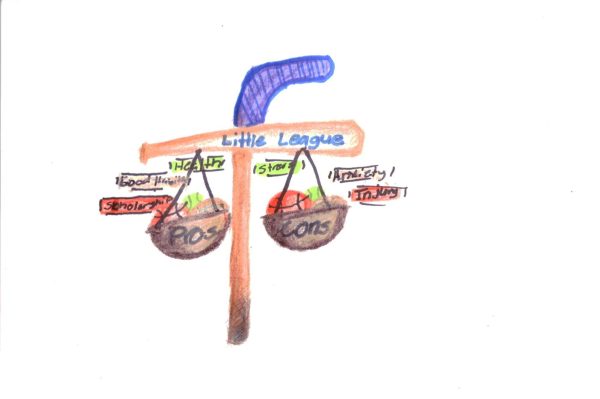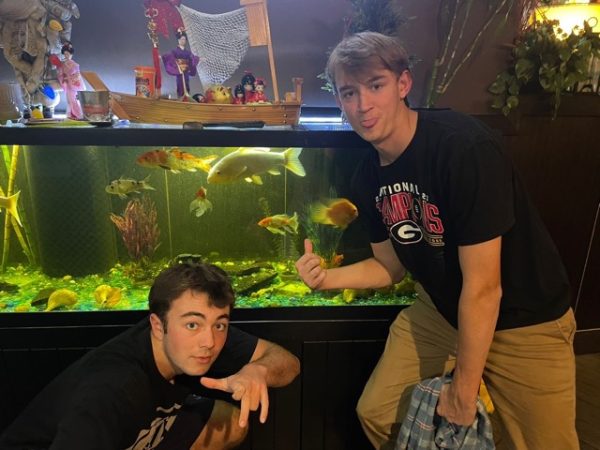Students spread copycat threats, social media
“Students, school staff, parents and grandparents, law enforcement, and our communities as a whole, are tired of seeing our students being fearful in an environment where they should feel safe to learn,” Johnston County, N.C. Sheriff Steve Bizzell told The News & Observer.
Almost all schools around the nation have been tentatively sending their students back to school this fall. One would imagine that, as students return to the once empty halls, being required to wear masks and to social distance would be enough. However, they are again faced with another danger, school shootings. Not only have actual shootings returned two-fold, another alarming trend has started to take over the nation’s schools: copycat threats.
Copycat threats often occur when a school shooting or a similar tragedy happens. People capitalize on these incidents and will make threats toward schools around that particular area. Oftentimes, the threats are only just that: threats. However, threats should never be taken lightly. Furthermore, even if there is no true intention behind the threats, schools and law enforcement must still go on high alert every time this occurs, because their highest priority has to be protecting the students.
According to WRAL.com, a few school districts in North Carolina have recently suffered over this particular issue. Multiple schools have gone on lockdown after receiving threats on social media from students. Lisa Luten, a spokesperson for Wake County Schools in North Carolina, said that these copycat responses are typical from students. This copycat behavior is not anything new.
After the Parkland High School shooting in 2018, there were about 756 copycat threats made toward schools during the month after the tragedy. Because this was such a high profile tragedy, reports sky-rocketed across the country over a short period of time. One can clearly see that there is a direct correlation between school shootings and subsequent copycat threats.
These copycat threats have caused fear and anxiety in thousands of elementary, middle and high school students, mostly because students will see these threats on social media and repost it for more people to see. The more people repost a threat, the number of people who see increases, leaving students anxious and scared. This vicious cycle will usually lead to chaos across campuses, students leaving the building, parents lined outside to pick them up, and large crowds fearfully running through the hallways.
Although most students don’t realize it, by reposting the threat and spreading it on social media, they’re just simply adding fuel to the fire. These situations are certainly scary, and it’s understandable for people to “freak out”. But instead of sharing the posts, students should instead worry more about reporting the threat to a trusted adult and let them take the necessary precautions.
Words and rumors, particularly threats, can spread like wildfire, and while social media allows students to stay informed, it can also have negative effects on the school’s ability to keep an orderly environment.
We are all aware that Information spreads faster than the speed of light now because of the many social media outlets. And, as the threat is passed around, it becomes a game of telephone, where the original facts get jumbled with wrong information, which only makes the problem worse.
According to the president of the National School and Safety Program Ken Trump, rumors often become much larger than the actual incident, and these things are often blown way out of proportion due to social media.
Obviously social media is a great way for students to be informed about what’s happening around the world, and specifically their community. This quick spread of information can be helpful, like warning students about a threat who didn’t immediately hear it from the school itself. Furthermore, social media gives people access to vital information and has the potential to save lives in a real-life, dangerous situation.
Overall, there is nothing inherently wrong with students trying to spread information across social media. They’re just trying to get the word out to make sure that everyone is aware about the serious situation. Most students who do spread copycat threat information don’t have any ill intentions, and just want to protect their fellow classmates.
However, what students don’t seem to realize is that they are just contributing to the fear and anxiety of everyone around them, and they could be potentially spreading misinformation to others, in what could be a dangerous situation. Even if more students are informed about the threat, it can escalate quickly. Then these rumors and misinformation become much larger than the actual threat.
Instead of posting about the situation and spreading information that may be untrue, students should focus on alerting a teacher or a trusted adult whenever they see a potential threat to the school. The administration will take care of the situation.
Above all else, the top priority of schools is to make sure that their students are safe. As students return to the classroom, and witness numerous threats toward their schools, it’s understandable that they would become anxious, posting about the situation on social media. However, it’s important for students to remain calm, report any threats, and listen to the administration. It’s the only way to ensure the safety, and quell the anxieties, of all students.










